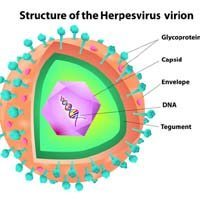Visualizing the Immune Profile of Mesothelioma Patients
 Researchers at MD Anderson Cancer Center in Houston have come up with a better way to analyze the immune profile of people with malignant mesothelioma.
Researchers at MD Anderson Cancer Center in Houston have come up with a better way to analyze the immune profile of people with malignant mesothelioma.
A person’s immune profile is the unique set of immune system cells and how they are working at any given time. The functionality of immune system cells in the area right around the tumor – the tumor microenvironment or TME – is especially telling.
The system developed at MD Anderson assigns different colors to key immune system markers. They applied the color system to a sample from the microenvironment of mesothelioma tumors. The result was an image of each tmor’s immune profile. These images could help doctors determine new targets for mesothelioma treatment.
What is an Immune Profile?
The immune system is supposed to help the body fight off threats. Cancer is one of those threats. Sometimes, mesothelioma manages to take hold in spite of the immune system. This can happen if there aren’t enough of the right cells responding or if they are not working right.
An immune profile is an analysis of the immune system T-cell and B-cell receptors in a tissue sample. These receptors allow cells to bind to specific antigens and trigger an immune response. The immune profile of someone with mesothelioma can be very different from a healthy person.
Normally, an immune profile appears as a list on a page. But the MD Anderson researchers found a way to make it more visual. By designating colors to certain key antibodies, they can create visual maps of immune response. These maps are easier to read and may be easier to use.
Profiling the Tumor Microenvironment
Pleural mesothelioma is a rare but fast-growing cancer caused by asbestos. It starts on the membrane around the lungs and can spread into the lungs. It is almost always fatal within a year.
Immunotherapy is one of the most promising new treatment approaches for mesothelioma. It involves manipulating the immune system. Understanding the immune profile in mesothelioma is key to making better immunotherapies.
The Houston team focused on the TME around pleural mesothelioma tumors. They tested tissue samples from blocks of preserved tissue. The blocks included mesothelioma tumors and the area around them. The goal was to see how the tumors affect the cells in their immediate microenvironment.
Using Immune Profile Maps
Researchers assigned colors to eight antibodies: PD-L1, PD-1, CD3, CD8, Foxp3, CD68, KI67, and pancytokeratin. They used immunofluorescence staining to create an image of the immune profile of each mesothelioma sample.
“Mapping the geographic cell phenotype distribution in the TME, we were able to identify two distinct, complex immune landscapes characterized by specific patterns of cellular distribution as well as cell phenotype interactions with malignant cells,” writes researcher Edwin Parra.
The visual “maps” created by this new system make it easier to interpret the immune profile. This could help doctors figure out what processes to target with new treatments.
“Overall, this will improve our ability to understand the behavior of cells within the TME and predict new treatment strategies to improve patient outcomes,” writes. Dr. Parra.
CLICK HERE to see an example of an immune profile map from a mesothelioma tumor.
Sources:
Parra, E, et al, “Identification of distinct immune landscapes using an automated nine-color multiplex immunofluorescence staining panel and image analysis in paraffin tumor tissues”, February 25, 2021, Scientific Reports, https://www.nature.com/articles/s41598-021-83858-x





